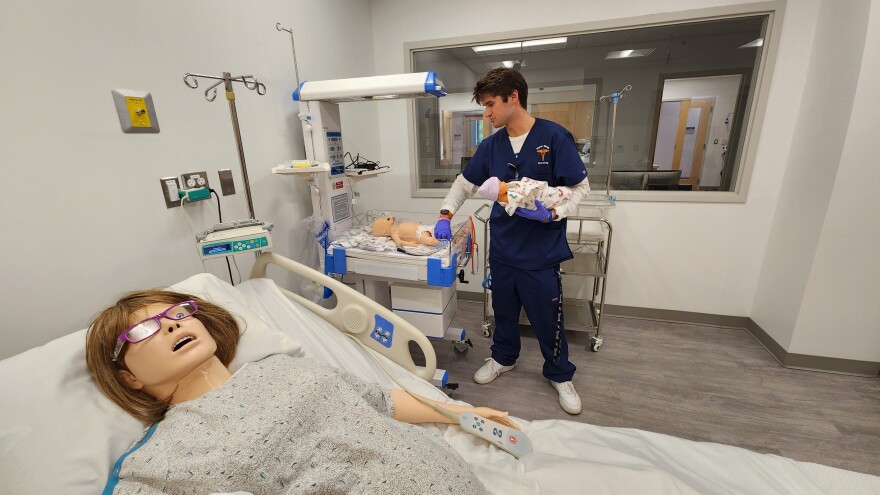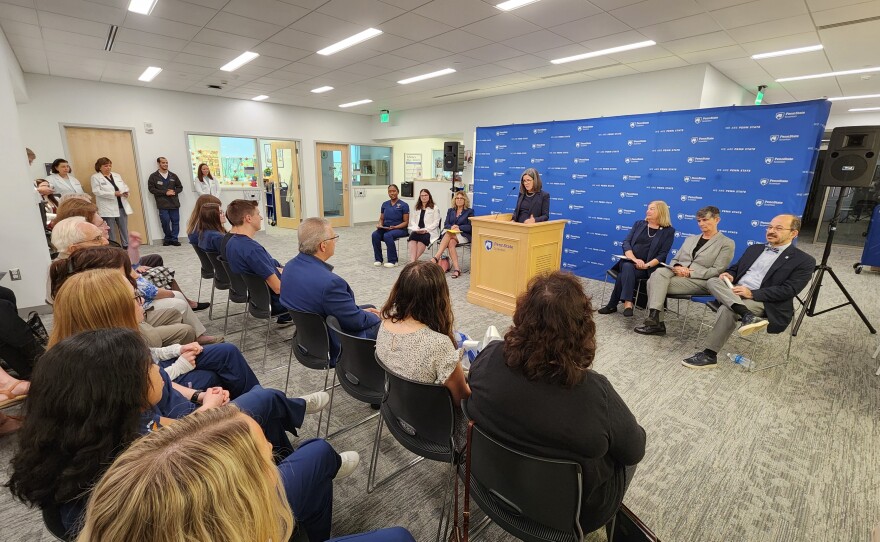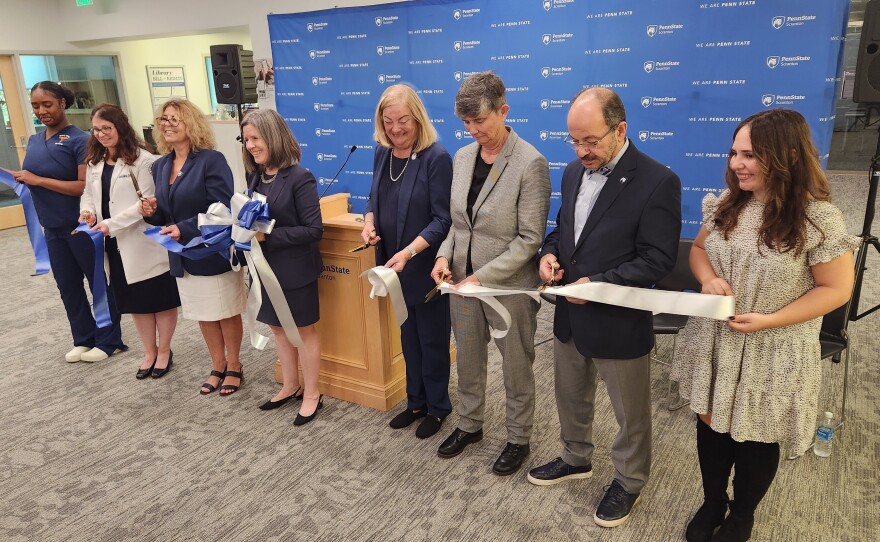John Evans wants to be a pediatric intensive care nurse.
He and his classmates at Penn State Scranton said renovations to the school’s nursing suite will help them reach their goals — and ultimately improve health care in the region.
The campus in Dunmore on Wednesday unveiled a $13.1 million renovation project that modernizes the library and strengthens the nursing program.
“It's really cool to be able now to have a room that's set up like an actual hospital. So that way we're kind of able to go through a real-life patient scenario,” said Evans, of Blakely. “That way, when we do get to the floor, we kind of know what we're doing.”
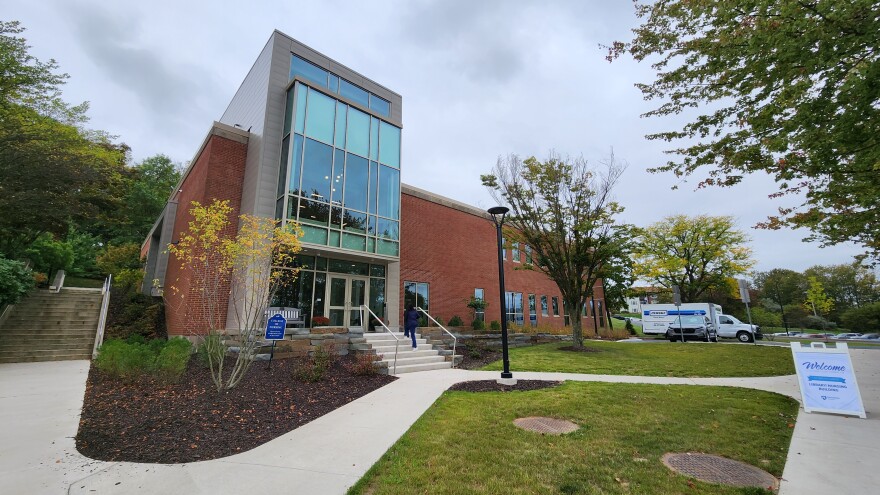
Students, staff and other representatives from campus and University Park filled the renovated library for a ribbon cutting ceremony.
“Being in a space like this, I know what a profound impact this will have, not only on the immediate Penn State Scranton community, but also on the surrounding region,” said Margo DelliCarpini, vice president of Commonwealth Colleges at Penn State.
Construction started in early 2023, and students began using the renovated space this semester. The 20,800-square-foot library building, built in 1970, serves between 250 and 400 students per day. The nursing program opened in the lower level of the building in 1991.
The renovation includes new entrances and a new lobby. The library is brighter and more conducive to modern learning, including group meeting spaces. A maker space includes a 3D printer and a Cricut machine.

Expanded technology in the nursing suite includes patient simulator labs and a nurses’ station where both students and their professors can observe inside “patient” rooms. A conference room, small meeting rooms and other spaces provide options for learning and group work.
“Renovated spaces such as the building you're in today demonstrate our sustained commitment to meeting students where they are and to helping them to thrive as they strive to meet their personal, educational and professional goals,” said Elizabeth Wright, regional chancellor.
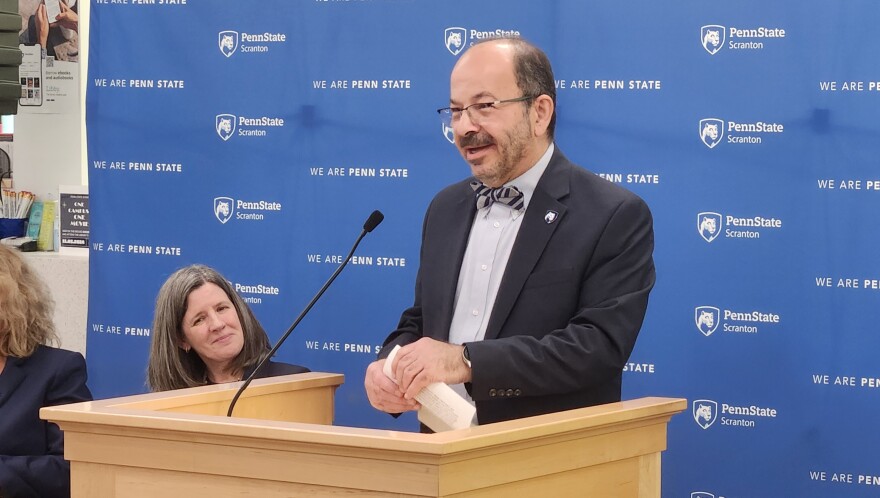
Speakers thanked the vision of Marwan Wafa, who retired as campus chancellor in June, but was present to cut the ribbon and express gratitude to those who made the project possible.
On Wednesday, vital signs from a patient simulator — a mannequin-like piece of technology on which students learn — displayed on a screen in the patient’s room and in the nurses’ station.
Students regularly check vital signs, distribute medications and practice giving end-of-shift reports. The simulators also provide real-life scenarios of medical emergencies nurses may face.
Jemya Wilson, a senior from Brooklyn, New York, and the Student Nursing Association president, said the project will impact students — and their future patients.
“It makes you motivated to learn more,” she said. “You're seeing it in school before seeing it in real life … You're more prepared.”

